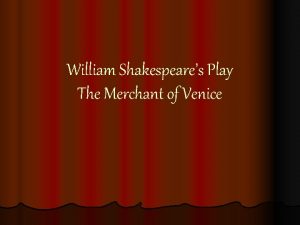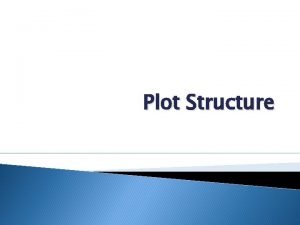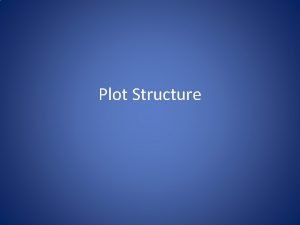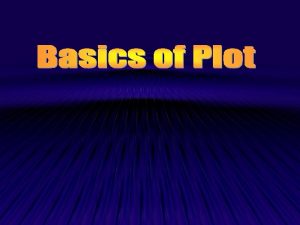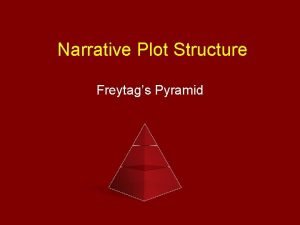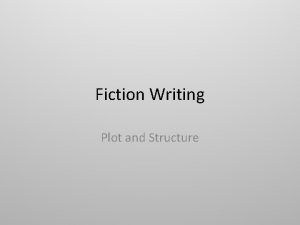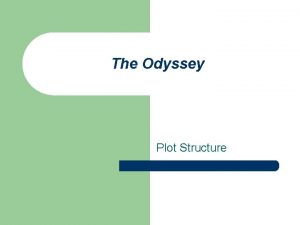The Structure of Plot Plot the authors arrangement










- Slides: 10

The Structure of Plot

• Plot – the author’s arrangement of incidents in the story • Freytag’s Pyramid – a diagram of the structure of a five-act tragedy, given by Gustav Freytag – widely accepted (and sometimes adapted) as a means of analyzing the structure of many kinds of fiction in addition to drama.

The pyramid is made up of seven steps – four phases and three moments from beginning to end.

Stage 1 • Exposition – the introductory material, which often creates the tone. Gives the setting, introduces the characters, and supplies other facts necessary for understanding

Stage 2 • Inciting Moment – the event or force that sets in motion the rising action of a work of fiction. Also called the precipitating incident, exciting force or narrative hook.

Stage 3 • Rising Action – the part of the dramatic action that has to do with the complication of the action. Begins with the inciting moment, gains interest or power as the opposing groups/ideas come into conflict, and proceeds to the climax. It can also be called the complication.

Stage 4 • Climax – the turning point in the action, the crisis at which the rising action reverses and becomes the falling action. Sometimes called the reversal.

Stage 5 • Falling Action – the second half of the dramatic plot. It follows the climax and often exhibits the winding down of the climax.

Stage 6 • Resolution – the end of the falling action and the solution of the conflict. The resolution is not always a happy ending.

Stage 7 • Denouement – involves not only the resolution of the conflict but an explanation of all the secrets and misunderstandings connected with the plot; the tying up of loose ends, exposure of a villain, clearing up a mistaken identity, reuniting characters, etc.
